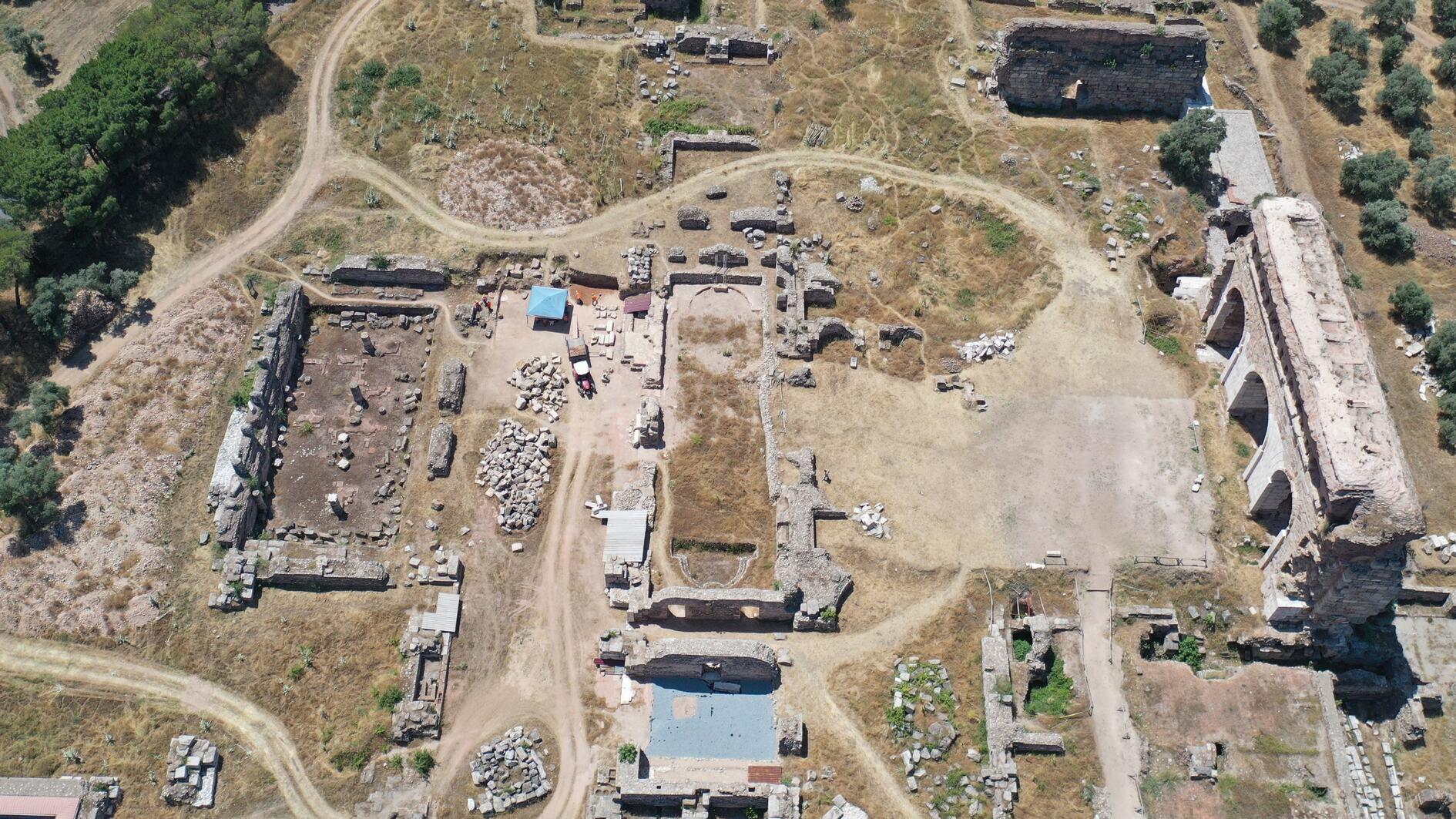
Excavations at the ancient city of Tralleis, located in the Efeler district of Türkiye’s western province of Aydın, are on the cusp of a major milestone: The restoration of a 2,000-year-old Roman-era pool.
As part of broader efforts underway in the city, the pool — part of one of Anatolia’s largest known bath-gymnasium complexes — is expected to be fully excavated, restored and refilled with water by the end of 2025.
The archaeological efforts led by Professor Murat Çekilmez of Aydın Adnan Menderes University’s Department of Archaeology are a part of the Culture and Tourism Ministry’s “Heritage for the Future” project, which aims to conserve and revitalize significant ancient sites across Türkiye.
According to Çekilmez, the 40,000-square-meter bath-gymnasium complex stands out not only in scale but also in historical and architectural value.
“This is one of the largest Roman bath complexes in Anatolia,” he said. “The pool, which could accomodate up to 200 people, has survived in remarkably good condition. We are aiming to complete the excavation and restoration process, and refill it with water by the end of 2025.”
Çekilmez explained the practical use of such a structure in its time. “Aydın is extremely hot, and so was it in antiquity. Thşs pool was primarily used for cooling off during the scorching summer months,” he noted.
He added that a roughly six-meter-thick fill layer had been removed from the site, revealing well-preserved architectural layers from both the Roman and Byzantine periods.
Yet the bath-gymnasium complex was more than just a place for bathing. In the Roman world, such spaces functioned as vital hubs of daily life, offering opportunities for socialization, education and physical activity.
“It relfects the wealth and cultural sophistication of Tralleis, a city once known for its production, trade and affluence.”
Indeed, the city’s urban design reflected its economic vitality. The expansive dimensions of the bath complex signal the city’s importance in the Roman period.
“Tralleis was a prosperous city,” Çekilmez continued. “It’s wealth is evident in this gymnasium complex. Such a large, multifuctional space was rare for the time.”
The broader excavation at Tralleis began in 1996 and has become the life’s work of Çekilmez. Now, after nearly three decades of research and conservation, he is preparing to open the site to the public — a personal dream since his days as a first-year archaeology student. With tourist infrastructure recently completed, visitors will soon be able to walk through the ancient city’s monumental structure, including its gymnasium, Roman roads and restored facades.
Tralleis has a layered and dynamic history. Believed to have been founded roughly 3,000 years ago by Thracians and Argives, the city rose to prominence during the Hellenistic and Roman periods. It became a significant administrative and commercial hub in western Anatolia and played a vital role in regional trade. It was also home to a notable sculptural tradition and hosted significant civic buildings, temples and agorae.
Among its most iconic structures is the so-called “Three Arches,” a portion of the ancient gymnasium that remains strikingly intact and has become a symbol of the site. The architectural resilience of the structure reflects the quality of Roman engineering and the city’s former prominence.
By the end of 2025, the sight of water rippling in the same basin that once refreshed Roman citizens will offer visitors a glimpse into the daily lives of the ancient world.